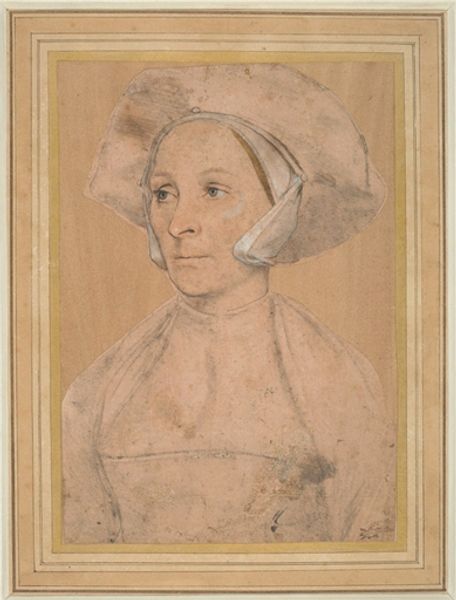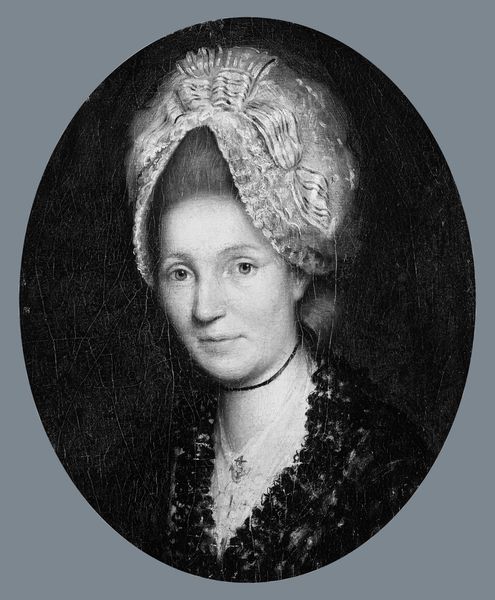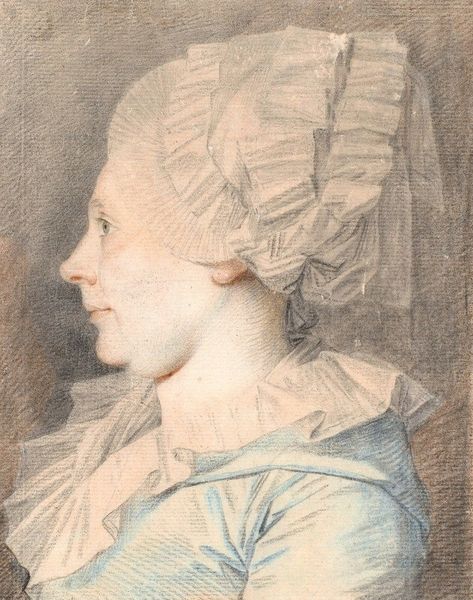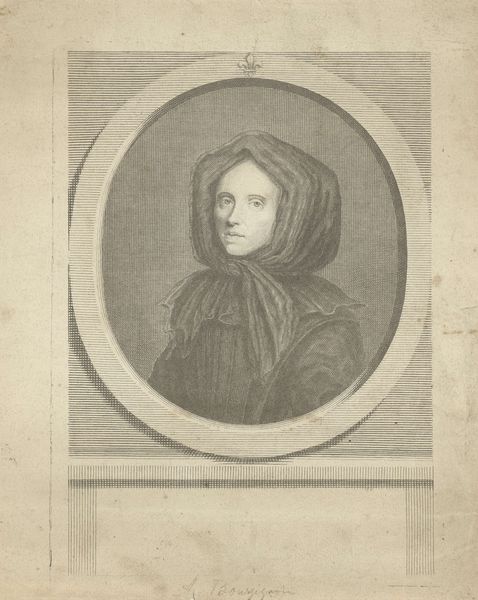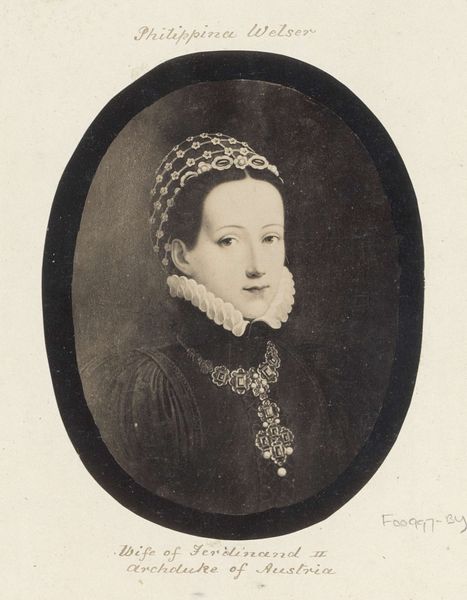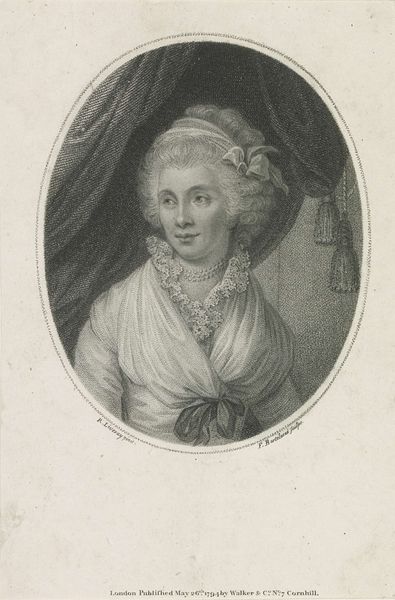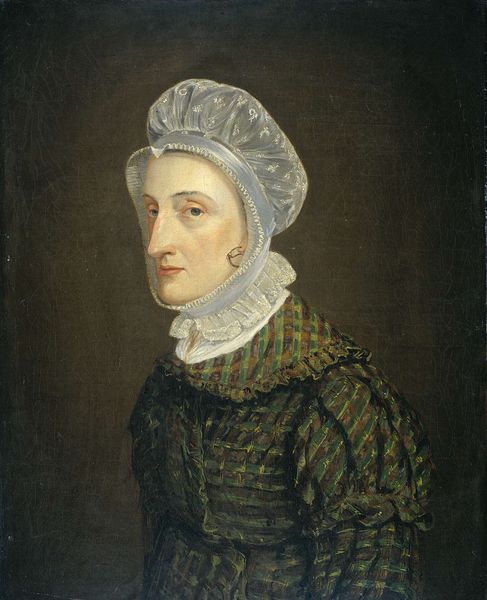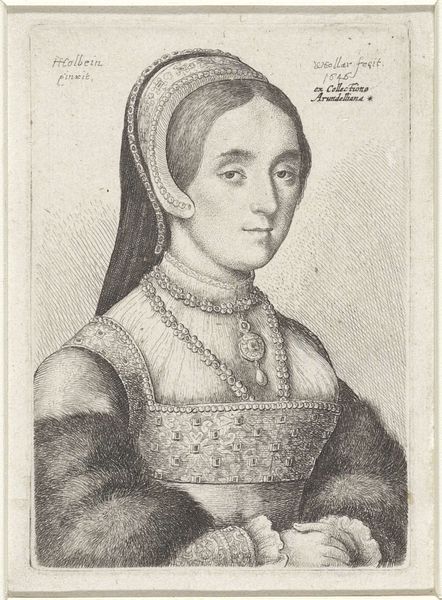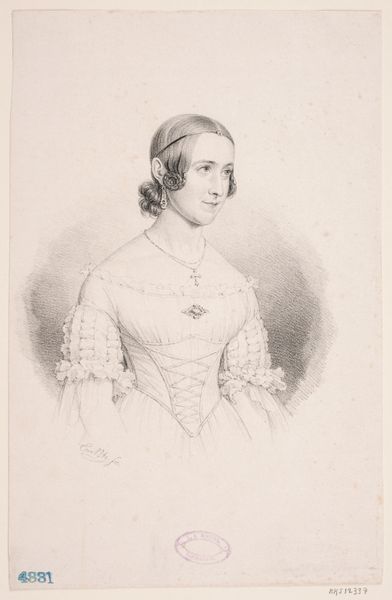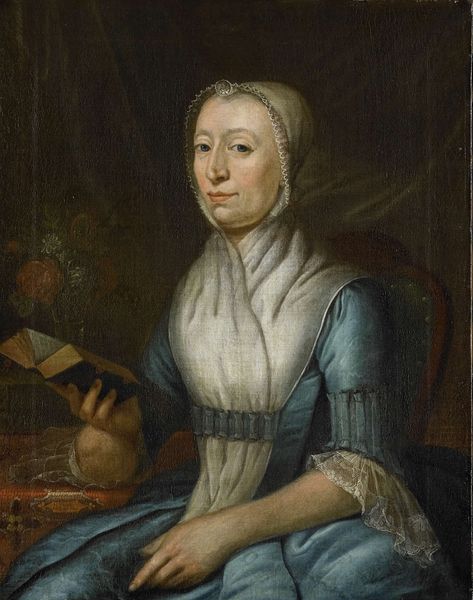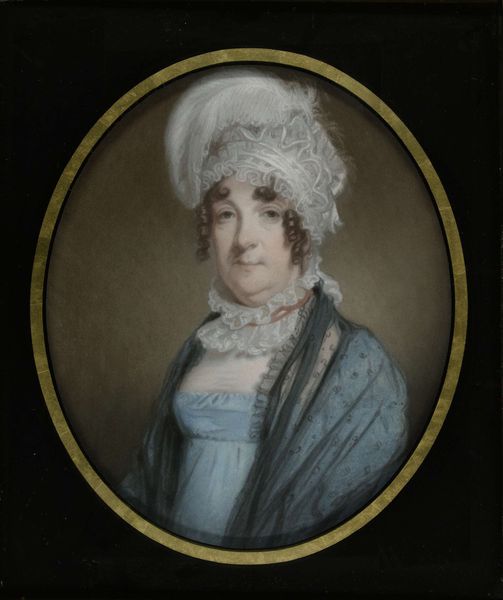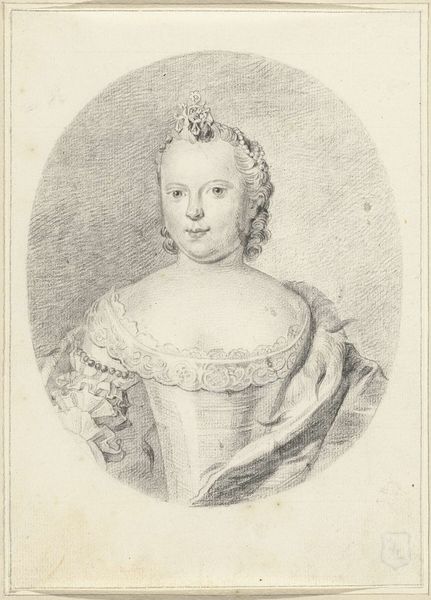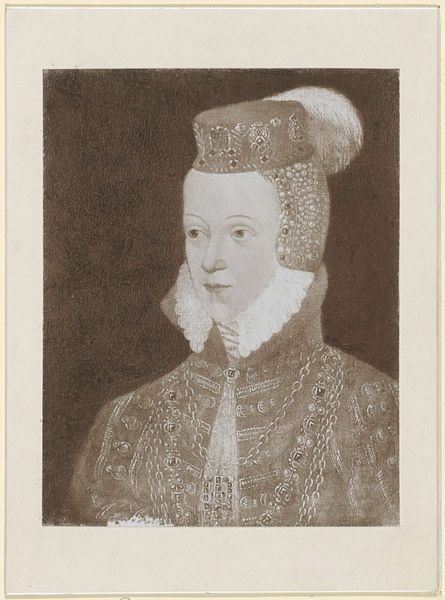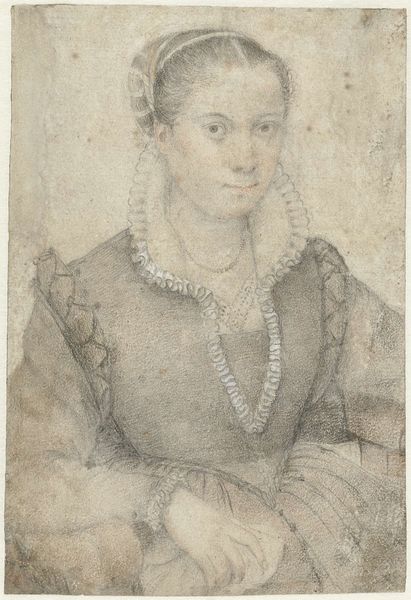
drawing, paper, pen
#
portrait
#
drawing
#
neoclacissism
#
charcoal drawing
#
paper
#
pencil drawing
#
pen
#
portrait drawing
#
portrait art
#
realism
Dimensions: height 142 mm, width 115 mm
Copyright: Rijks Museum: Open Domain
Curator: What strikes me immediately is the quiet dignity emanating from this portrait. Editor: And I find the apparent simplicity misleading. We're looking at "Portret van Willemijntje van den Bos" by Cornelis van Noorde, created in 1792. The Rijksmuseum holds this gem, a careful composition rendered with pen, pencil and charcoal on paper. Curator: "Careful" is right. The subtle textures in her lace cap, for example, and the way the light falls just so. Do we know anything about van Noorde's artistic background, particularly his access to such fine materials? Editor: Van Noorde was a skilled printmaker and draughtsman. This drawing reflects a period of growing Neoclassical influence, and a move away from grand baroque portraiture toward something more restrained. Curator: I am interested in what the means of production tells us about this drawing. Paper, ink, charcoal, all readily available, yet deployed with such deliberate skill. Is there a relationship to the rise of middle class patronage at the time? Editor: Absolutely. Portraiture becomes democratized as it finds audiences outside the aristocracy. Think of the context: the Batavian Republic was on the horizon, and notions of citizenship were reshaping society and, naturally, artistic tastes and demands. Curator: She presents herself not as some grand figure, but as an individual—a citizen. The lack of ostentatious adornment is noticeable. It makes me wonder what kind of craft production defined the attire, what was its cost and accessibility within society at the time? Editor: Costume, certainly. The clothing of the subject reflects a kind of conscious restraint that suggests a departure from prior models of lavishly adorned portraiture meant to highlight one's wealth and class standing. The fact it's a drawing, a medium often associated with study or preliminary work, furthers this feeling of closeness to the person depicted. Curator: Thank you. Considering what went into producing artworks at that time changes how we value art. Editor: And seeing it through a broader social lens enriches our understanding, certainly.
Comments
No comments
Be the first to comment and join the conversation on the ultimate creative platform.
